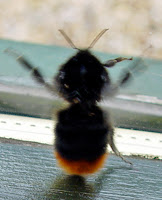 Two hundred and twenty years ago this month The Bard left Edinburgh on a trip around the Eastern Borders.
Two hundred and twenty years ago this month The Bard left Edinburgh on a trip around the Eastern Borders.It was on 5 May 1787 that Robert Burns and his friend Robert Ainslie, Burns left Edinburgh for a tour of the Borders. Ainslie was the son of the land-steward of Lord Douglas’s Berwickshire Estates, he was born at Berrywell near Duns. Ainslie was a law student in the Edinburgh office of Samual Mitchelson when Burns met him in early 1787. Both men were lovers of wine and women and the odd song so they forged a natural friendship.
Their route lay through Haddington, Gifford, Longformacus, Duns, Coldstream, Cornhill-on-Tweed, back to Coldstream, Kelso, Roxburgh, Jedburgh, Wauchpe, Kelso, Melrose, Dryburgh, Selkirk, Innerleithen, Caddonfoot, Galashiels, Earlston, Duns, Berwick, Eyemouth, Dunbar, Duns, Alnwick, Morpeth, Newcastle, Hexham, Longtown, Carlisle, Annan and Dumfries which he reached on 1 June. At Jedburgh and Dumfries he was made a freeman of the burgh.
Left Edinburgh (May 5, 1787)—Lammermuir hills miserably dreary, but at times very picturesque. Langton Edge, a glorious view of the Merse; reach Berrywell. Old Mr. Ainslie an uncommon character—his hobbies, agriculture, natural philosophy, and politics. In the first he is unexceptionably the clearest-headed, best-informed man I ever met with; in the other two, very intelligent.
Having been south into England they later returned to Duns prior to going to Eyemouth where boh men were made Royal Arch Masons at the local Masonic lodge
Wednesday May 16.—Dine at Dunse with the Farmers’ Club —company, impossible to do them justice— Rev. Mr. Smith, a famous punster, and Mr. Meikle, a celebrated mechanic, and inventor of the thrashing-mill. Thursday, breakfast at Berrywell, and walk into Dunse to see a famous knife made by a cutler there, and to be presented to an Italian prince. A pleasant ride with my friend Mr Robert Ainslie and his sister to Mr. Thomson’s, a man who has newly commenced farmer, and has married a Miss Patty Grieve, formerly a flame of Mr. Robert Ainslie’s. Company, Miss Jacky Grieve, an amiable sister of Mrs. Thomsons, and Mr. Hood, an honest, worthy, facetious farmer in the neighbourhood.
 The Lammermuir College of Knowledge
The Lammermuir College of Knowledge




















